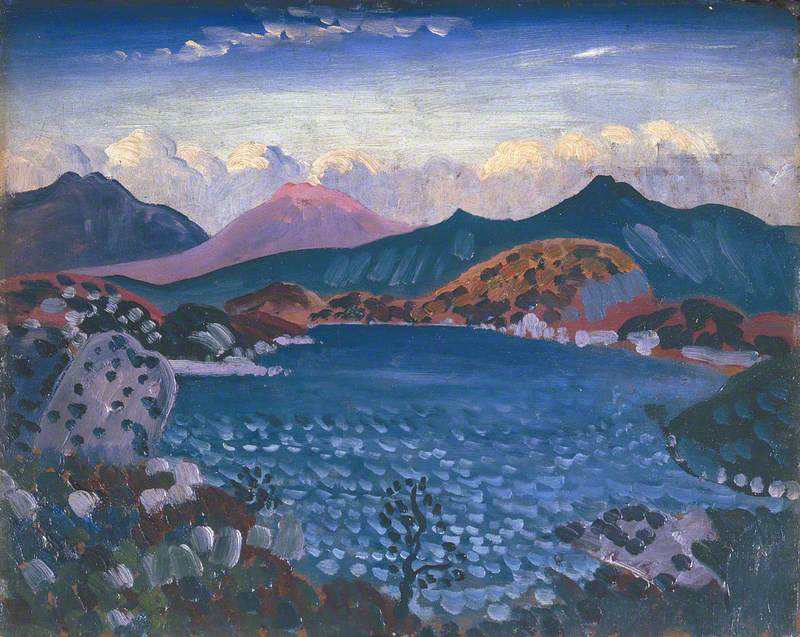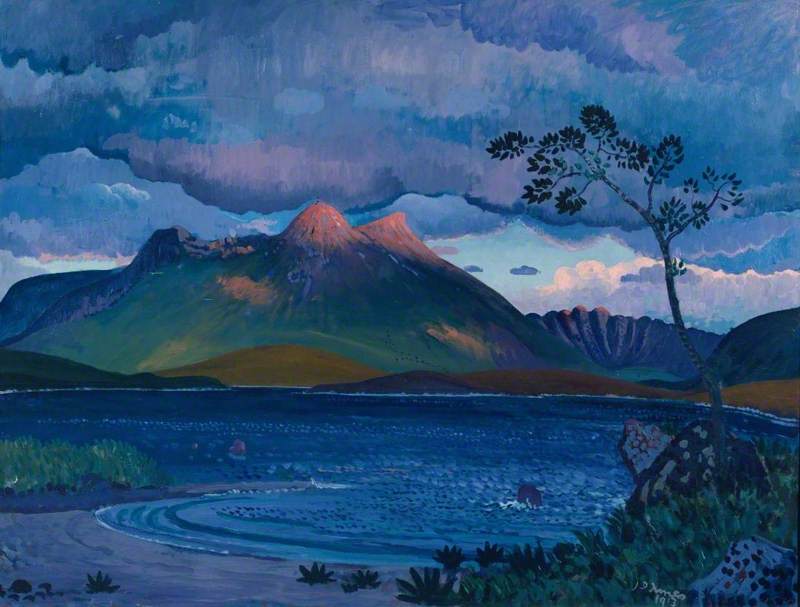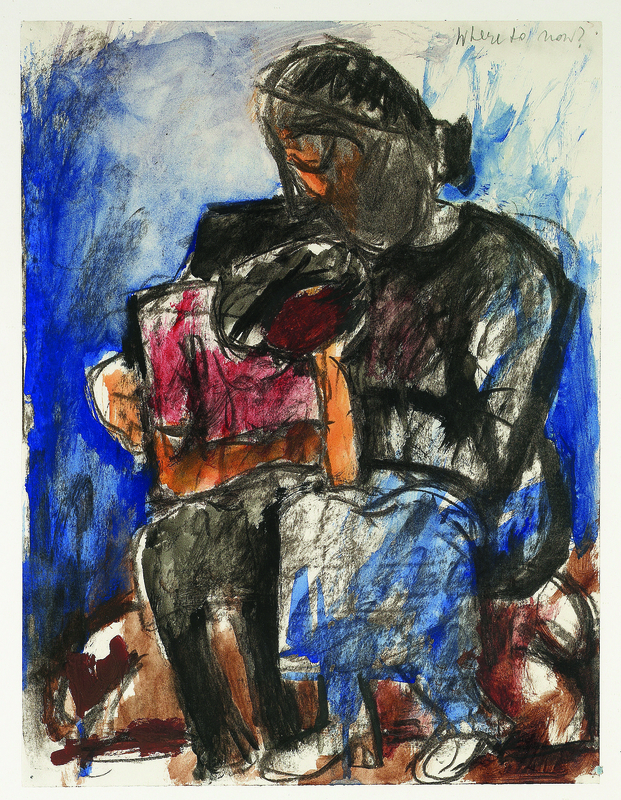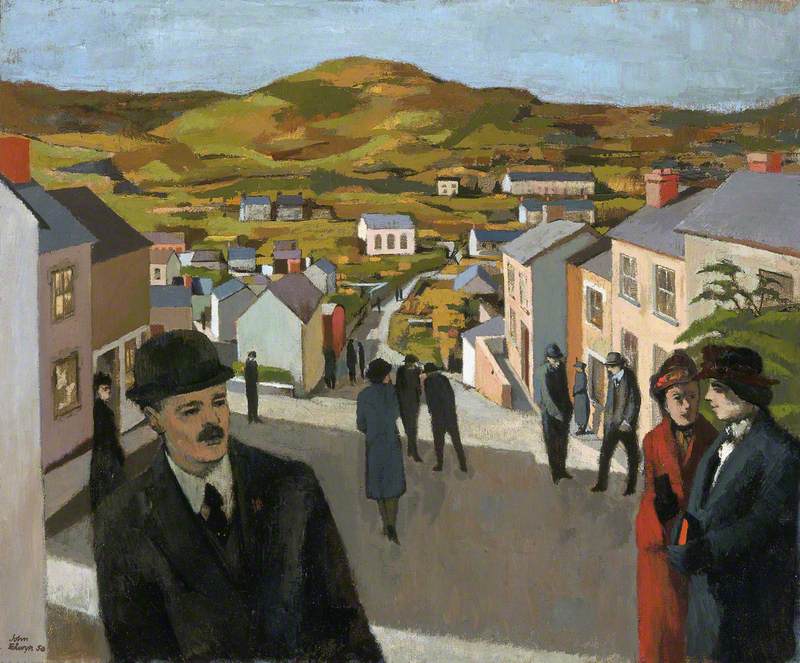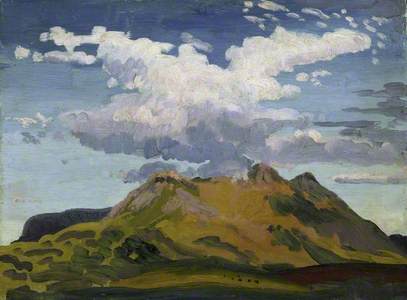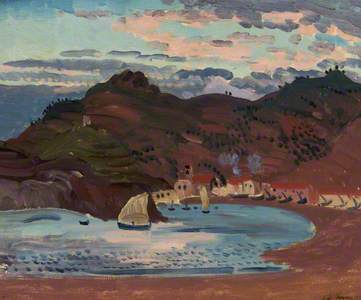James Dickson Innes was one of the most extraordinary and individualistic of the young British artists sprung from the Slade School in the years just before the First World War – but sadly also one of the most overlooked. Both of these facts can be ascribed in large part to Innes's early death. He succumbed to tuberculosis, aged only 27, in August 1914, a few weeks after the outbreak of war. Sickness had given him the drive to paint – and to paint how and what he wanted – whilst the war and all it brought with it overshadowed his youthful achievements.
Innes – known to friends simply as 'Dick' – was born in Llanelli, south Wales, on 27th February 1887. Having studied at Carmarthen Art School from 1904 to 1905, he went up to the Slade School of Fine Art in London in 1906, where he remained till 1908.
The best description of him comes from the 1946 biography written by his one-time friend and fellow Slade student, the renowned innkeeper, John Fothergill:
'He was strikingly handsome with his long, pale face, lank hair over a high forehead, big black eyes and cupid's bow lips. He made the most of these attributes by his clothes, the nice conduct of his ebony cane, and low melodious voice which, for great shyness, he withheld from strangers. He was affectionate and easily led as one who wanted help to get through life's effort. Mrs Derwent Lees said there was something of the saint about him; there was a lot, but this didn't prevent him from pursuing several wild romances in his short life.'
Fothergill pointed out the great struggle Innes had with life-drawing – which was a significant feature of the Slade's teaching method. 'There remained with him to the last,' Fothergill observed, 'traces of this lack of craftsmanship not only in his figures but other objects. It was a sort of ignorance that, like the mistakes of children, is appealing and is evidence of his independence.'
In 1908 Innes and Fothergill travelled through France, eventually reaching the little Mediterranean town of Collioure, on the coast near the Spanish border and the Pyrenees. Innes would be struck by the light and colour there – though he also took ill, and on his return to Britain would be diagnosed with the disease that eventually killed him.
A rest cure to St Ives in Cornwall was followed by a move to Paris, and then an important period of friendship and close collaboration with his fellow Welsh artist, Augustus John (1879–1961).
As the development of his work reveals, there was a rapid move around this time away from the interior views popular with the Camden Town Group and back to landscape.
Innes took John to see the mountain of Arenig Fawr in Snowdonia in north Wales, which – like the Mediterranean coast and Pyrenees – had been a great inspiration to him. There, along with another former Slade student, the Australian artist Derwent Lees, they produced a remarkable series of naïve, colourful, Post-Impressionist inspired landscapes.
As Fothergill observed, the chief qualities of Innes's landscapes were 'spontaneity, atmosphere, colour and originality... he set out simply to copy nature, as all great artists have done, and I'm sure that he never realised how different his productions were from everything that had gone before.'
Innes 'painted like a sophisticated and moon-struck bargee', John would write, 'and I envied him this faculty, but of course was incapable of imitating it.' John realised that while he drew better than Innes, the latter's 'limitations actually helped him' in interpreting his visions of these primitive landscapes.
For a while the two artists were very close, and also worked together in the south of France; but Innes grew increasingly ill, his disease not helped by his drinking and the general lack of care he took with his health. As John would write following Innes's untimely death in 1914, 'In a feverish and interrupted life he had time to prove himself a true poet-painter. As different as chalk from cheese... he was as far apart from his contemporaries, even when he admired them.'
David Boyd Haycock, freelance art historian






